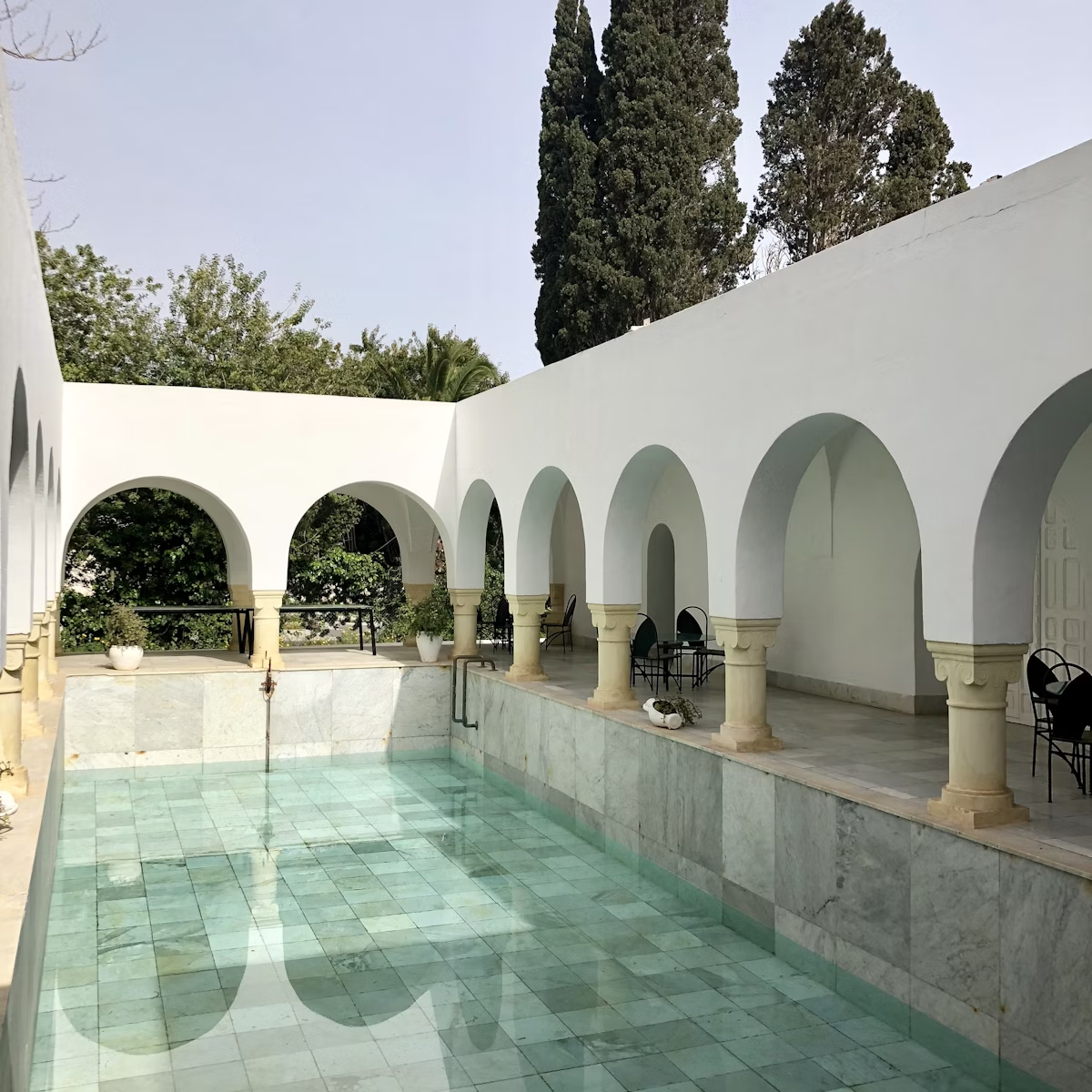On the cultivated amber slopes of Mt Mekrima, the fascinating but little-visited ruins of ancient Uthina are the remains of one of the Roman Empire's oldest cities in Africa. Not much is known about Uthina, but the city had one of North Africa's largest Roman amphitheatres, enjoyed by its cosmopolitan residents in the city's 2nd-century heyday, and it's still the biggest draw for today's traveller.
Near the site entrance, the nearly fully restored Hadrian-era amphitheatre was dug into the hillside and could hold about 16,000 spectators. Thanks to a recent cash injection, the amphitheatre's basement, where criminals and wild animals paced in waiting pens before their 15 minutes of fame in front of roaring crowds, can now be explored. A mesh-covered gash across the entire arena floor offers a window into the lower level before you descend the stairs. Don't miss the lararium, a painted niche where the beast hunters gave offerings to ask for protection.
At the top of the hill stands the grand Capitole, pinned down on one side by five partially reconstructed columns. In an act of supreme colonial arrogance, a French farmhouse once stood here; it was torn down when Uthina became an official archaeological site in 2008.
Below the Capitole are magnificent vaulted chambers from the Roman and Byzantine periods, but their use isn't fully understood. A small museum is ensconced in one of the alcoves.
The former forum, to the southeast of the Capitole, is occupied by dilapidated colonial outbuildings now used by the excavation and maintenance staff.
Further southeast of the forum, at the end of an aqueduct that supplied spring water from nearby Djebel Ressas, are the remains of a reservoir. Most of the water was delivered to a network of enormous arched cisterns, 200m south of the reservoir. Some have collapsed, although others remain in remarkably good condition.
The jumble of collapsed masonry chunks east of the Capitole mark the site of the big public baths, which were damaged by explosions while being used as an arms depot during WWII. The subterranean level, still in good condition, is where you can witness the Romans' typical achievements in engineering, including clever ways to dispose of the dirty bath water.
Back north on the road to the amphitheatre are the Baths of the Laberii, which take their name from an inscription found on a mosaic of Orpheus charming the animals, now in the Bardo Museum in Tunis. The nearby Fishing Angels Baths still has a fine semi-circular wall mosaic in situ, depicting cherubs casting poles and nets into a fish-laden stream. When Uthina went into decline during the Byzantine era, the northeast part of the complex was converted to a pottery workshop, and many Christian artefacts were discovered here.
The baths stand beside the remains of the sumptuous 30-room villa called House of the Laberii, which has a couple of ersatz mosaics, which illustrate the legend of wine invention, as well as hunting scenes where two dogs named Ederatus and Mustela pursue hares and foxes, and are followed by their owners on horseback. Another mosaic depicts a complex agricultural and hunting scene, a corner of which shows a person hidden under a goat skin luring partridges into a bag-shaped trap. The originals are on display at the Bardo.
There’s a map of the site (with a brief text in Arabic, English, French and Italian) between the ticket booth and the amphitheatre.
The site is between Tunis and Hammamet, but you can't get here by public transport. If you don’t have a car, you can charter a taxi from either town.








